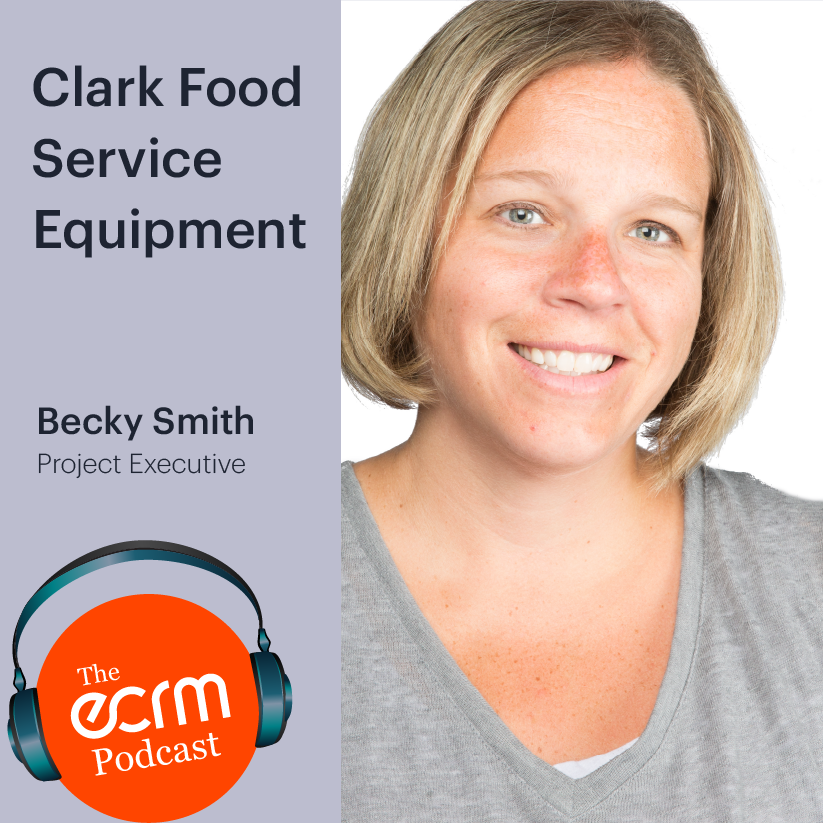How Clark Food Service Equipment is Helping to Make Dining Safer 9/4/2020
 There’s no doubt that the foodservice industry has been one of the hardest hit by the pandemic. The entire nature of the business – in which people gather around closely to eat, drink and converse at restaurants, campuses, corporate dining rooms and nursing homes – has been turned upside down by social distancing and sanitization requirements.
There’s no doubt that the foodservice industry has been one of the hardest hit by the pandemic. The entire nature of the business – in which people gather around closely to eat, drink and converse at restaurants, campuses, corporate dining rooms and nursing homes – has been turned upside down by social distancing and sanitization requirements.
Foodservice operators have been innovating ever since the outbreaks in March to accommodate these requirements as best as they can, helped in no small way by their supplier partners, who have done much innovating themselves. Clark Food Service Equipment, based in Lancaster, Penn. and a recent participant in ECRM’s Foodservice Virtual Sessions, is a great example of this.
The supplier has seen a lot of changes in the industry during its 40 years in business, but never so much change so fast as it’s seen in the past several months. “As you can imagine, things came to a screeching halt in March, when everything started shutting down and directives were given,” says Becky Smith, Project Executive for Clark Food Service Equipment. “There was a lot of uncertainty everywhere, but especially in the foodservice world, where all of a sudden colleges and universities are closing and restaurants are closing and senior living communities are locking down. We've probably done more in this short period of time than we ever have. But at the end of the day, it’s all about us finding ways to assist them.”
The word that comes to mind for Smith is pivot. Innovation has always been a part of the Clark Food Service Equipment culture; the pandemic just speeded it up, focusing on redefining the expectations of the industry beyond just selling their products, and working hand-in-hand with customers to enable them to keep them operating and in motion in a safe and effective manner. Together they have come up with some creative solutions.
LISTEN TO THE FULL PODCAST INTERVIEW HERE (OR WATCH THE VIDEO BELOW)
Secondary Spaces
One such solution is creating secondary spaces within a location as a way to keep more distance between people in large dining areas, effectively dividing up what was once one large dining area into several smaller ones, using trailers, tables, pickup areas, stanchions, crowd-control barriers, booths and the like. Technology is also playing a role here, with apps for ordering ahead and picking it up – anything that helps minimize close contact is coming into play here, whether equipment, technology, or processes.
Hand-in-hand with spacing people out is minimizing contact, and this is where disposable supplies come into play. However, this need for increased safety during this time means many operations have to forego some of their existing sustainability initiatives for the time being.
“We were in such a state of pushing sustainability and green products and making sure that we're going away from that waste,” says Smith. “But this has really pushed us to kind of go to what's going to work within this timeframe and get through this pandemic. So you have to be willing to break your own rules and willing to change. I know a lot of the universities are struggling with that. Their sustainability teams are so important to them. But we have to do what's right for safety.”
Many Clark customers who have redesigns underway are rethinking them entirely with the pandemic in mind. Plans that originally called for buffets and salad bars are now becoming employee-served instead of self-serve. Labor is now factored into these designs, as in many cases more staff will be needed to offer these same choices in these new formats. “Instead of having the entire area be a café or dining room, half may be a micro-market or outposts or a to-go pick up area for remote ordering,” says Smith. “That really is the way of the future.”
Some of these adaptations are also about managing customers’ perception of safety. When customers visit a dining area that makes them feel safe with spacing, barriers, a proper flow of traffic and visible sanitization practices, they are more likely to return.
And Clark is helping in more ways than just distributing products. For example, the company pledged 1,000 pieces of cheer mail to the assigned senior communities with which they partner, and employees company-wide volunteered to write cards and draw pictures to help lift the spirits of those seniors quarantines in their facilities.
The Role of Virtual
Like everyone else, Smith has had to adapt to using virtual platforms in her day-to-day business. “I’ve learned so many new platforms as everyone else has, but virtual works,” says Smith. “Some of our partners are saying that they used to travel five days a week, and that has come to a screeching halt. But it has allowed everyone to stay in touch and we’re learning we can do it just as well.”
Smith was scheduled to participate in ECRM’s Foodservice sessions in-person this past March, when it was postponed like every other in-parson gathering. But she decided to participate in the Foodservice Virtual Sessions because it mimicked the private, pre-scheduled face-to-face meeting format that its sessions are known for in-person.
“It was a no-brainer for us,” says Smith. “What better way can you engage with a potential buyer for 20 minutes and have the time to learn their needs, share your capabilities, and see if there is a partnership. You’d be hard-pressed to have that happen at a show where you have a booth.”
ECRM’s high-tech, high-touch model was also a factor in her decision to participate, as the approach is very consistent with the way Clark Food Service Equipment operates. “The hand-holding is from start to finish,” she says. “We were assigned Corbin [Frazee] as our Client Success Manager to see me through everything, answer any questions, and she was constantly reaching out to me. The proactivity was impressive. And that’s what we also pride ourselves on at Clark. Being proactive, being the solution for the customer, it’s about what’s right for the partnership, not about how we can gain more. So that was really cool that it really aligned with our principles. When you make the customer feel like they are the only one, that’s what makes it special, and I felt that way with ECRM.”
Smith also found the high-tech aspects of the ECRM Connect platform helpful in providing all of the tools she needed to get the most out of her meetings with buyers. “Having the ability to see everything about the buyer, to understand who you are meeting with and what’s important to them, what they are looking for, to provide my information for the buyer to see helps make the best use of our time,” she said. “And all of the other tools and resources built into the site, like the meeting ratings and the ability to take notes while speaking with a buyer, were above and beyond what I expected.”
And while she is looking forward to the time when she’s actually be able to experience an actual ECRM in-person session (as are we!), Smith understands that virtual will still be part of the mix for everybody’s business once the pandemic is past. “I think virtual is going to be where things are,” she says. “We all learned that we can get more done in less time with virtual, and everyone will slowly continue to embrace it. It goes back to the concept of innovate or die. Those companies that don’t continue to evolve and understand how important this technology are, they’ll just stay where they were.”


Sarah Davidson is ECRM's SVP of Grocery, and can be reached at 440-542-3033